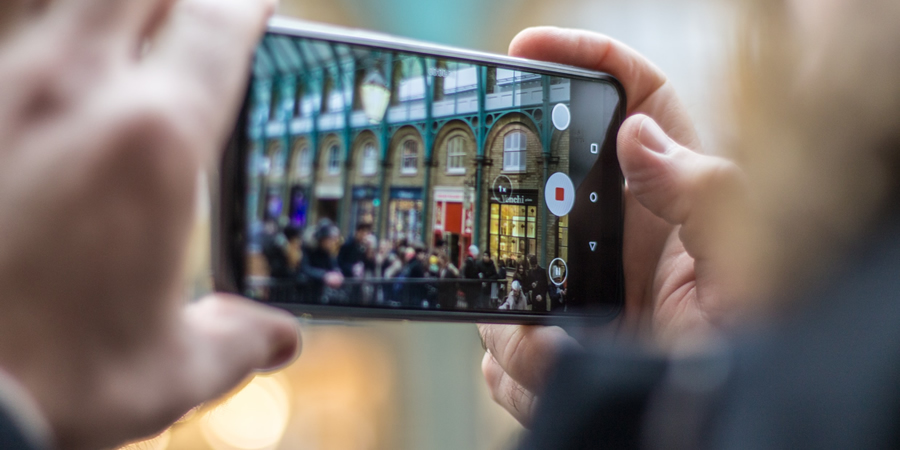5G connectivity promises a greater user experience with its high bandwidth combined with massive MIMO technology to provide users with Gbps data rates. However, in large open areas such as sports stadiums, convention centers and railway stations with a high user density, such Gbps experience can suffer owing to interference in radio signals. A ubiquitous and consistent service for such areas can have many takers and open up investments opportunities for improved network infrastructure and coverage given the digitalising of critical sectors.
Recognizing this gap, Huawei along with partner China Mobile Hebei introduced 5G indoor ubiquitous gigabit network powered by 5G distributed Massive MIMO technologies. The network became one of the first of its kind to be constructed for metro substations in China. Indoor distributed Massive MIMO introduces Massive MIMO for macro base stations to indoor networks. It is an innovative approach by Huawei to continuously increase the capacity of indoor 5G networks suitable for emerging industrial services, such as AGV operations, video transfer, 5GtoB expansion to factories, ports, power grids, airports, transportation, security, and many other industrial markets.
Field tests registered a user-perceived rate of over 1 Gbps in 95% of the substation areas to deliver a ubiquitous Gbps experience to users regardless of their physical locations.
Marvin Chen, President of Huawei DIS Product Line, says, “Distributed Massive MIMO introduces Massive MIMO to the digital head-ends of indoor networks. Due to this innovative application, up to 64T64R transmission is now possible in indoor networks, adding to new tools carriers can leverage to provide ubiquitous Gigabit experience in indoor areas."
Similarly, Nokia’s AirScale small cells portfolio is dedicated to superior indoor and outdoor 5G coverage. Products such as AirScale micro Remote Radio Heads (mRRH), AirScale indoor Radio (ASiR) solutions and millimeter wave (mmWave) radio product line-up are designed to support the majority of frequency bands, including requirements for C-Band spectrum in the US. These solutions let operators cost-effectively densify their networks, especially in areas where deployment of a macro cell would be lacking.
New service requirements
Urban hotspots such as convention and exhibition centers, stadiums etc, where there is a high density of users, mobile networks require a higher capacity for effective operations. Traditionally, to meet this capacity base stations are added to indoor networks to increase the spectrum multiplexing rate. However, this provision often experiences interference arising between channels operating on the same frequencies. On the other hand, 5G indoor distributed Massive MIMO leverages multi-antenna joint reception and transmission, converting the interference on the boundary of cells into stronger signals that carry digestible data, boosting the overall capacity. The seamless Gigabit experience provides a strong foundation for exploring diversified mobile broadband services indoors. Thus, telecom carriers can offer seamless 5G Gigabit services to high-density user locations effortlessly. The distributed massive MIMO approach is poised to have a great impact on the user experience and operator business case, even in the most demanding indoor 5G environments.
Immersive applications
Sports organization such as NBA has been experimenting with immersive applications such as augmented reality (AR) and virtual reality (VR) to provide deeper sporting experiences. With the gigabit services, teams can interact with fans with immersive use of video across the stadium. It will also allow the fans to buy and sell tickets, provide directions as they go about in the venue, buy merchandise order food, and enjoying the game whilst staying connected to the Internet for work or personal use.
5G network indoors can additionally benefit from Massive MIMO connectivity not only in coverage and experience but also in creating more value addition by providing tailored network capabilities suited for special use cases such as concierge services, dinner reservations, and special arrangements for future events.
Operational efficiencies during festivals and events
Event organizers and planners can provide actionable information in real-time to improve operational efficiencies in the venue. Crowd-facing communications can be delivered via a single console rather than manual controls, including weather updates, exit, and traffic information, emergency alerts. With faster connectivity, surveillance equipment can be integrated into first-responder communications systems, facilitating quicker situational awareness and incident response time. By incorporating automation, systems can be driven from central data servers thereby reducing operational costs and conserving energy use.
Greater Return on Investment (ROI) sense
With high-speed connectivity, the venues can easily add new revenue streams by providing technologies and solutions that enable customization of their offerings. Adoption of new solutions and services that adapt to changing markets and visitor needs can ensure a greater return on investments. Diverse value-added services such as membership, facial recognition, smart parking, and smart shopping can also be offered. Delivering ubiquitous high-speed experience has already become a priority in network construction among global carriers.
Breakthrough in indoor 5G technology
Indoor distributed Massive MIMO is being seen as the optimal solution to increase capacity and experience for users in the medium- and high-value scenarios.
Many operators are deploying Huawei's 5G indoor digital product LampSite to provide downlink thorough put of up to 2.7 Gbps. They are collaborating on projects to work with Huawei to innovate and deploy network solutions-oriented to various 5GtoB cases, including large shopping malls, venues, transport hubs, smart manufacturing, and smart healthcare.
As the mobile industry steps into the 5G era, over 70% of data traffic will be generated indoors as per recent market studies. Mobile carriers will benefit from indoor distributed Massive MIMO to improve network capacity and service quality for users in urban hubs with a high density of mobile users and maximum demand for data traffic. It will also provide them with a solid technological foundation for expanding 5G into the vertical markets. However, to get the most out of its potential, effective responses to the challenges of network coverage, user experience, and network capability remain the foremost responsibility of network providers as well as system vendors at all times.









